Painting decorative plaster: application methods
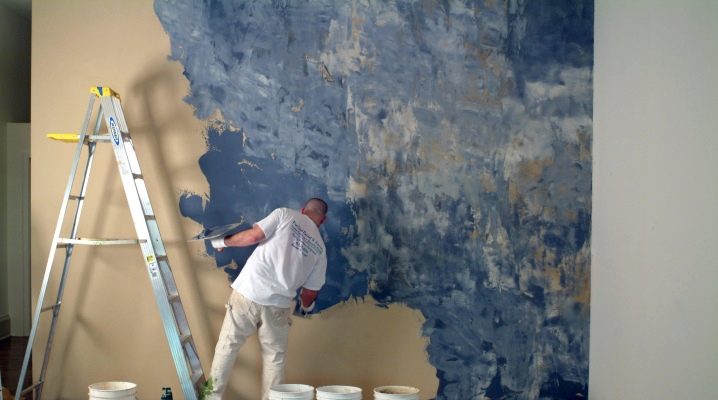
Just a few years ago, plaster was used mainly as a finishing material for leveling surfaces, hiding various chips and cracks. Today the situation has changed: a special decorative plaster has appeared on the market, which is used as a final coating. Painting decorative plaster: considering application methods.
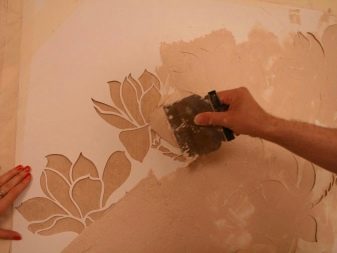
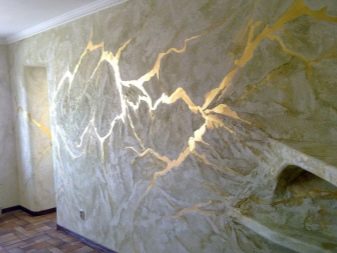
Peculiarities
Decorative plaster, like other finishing materials, has its own distinctive features:
- This type of plaster has 2 purposes: rough leveling of walls and their decoration.
- This finishing material is resistant to fading, mechanical damage, high humidity and sudden temperature changes.
- It comes in two flavors. On sale you can find decorative finishing material for indoor or outdoor use.
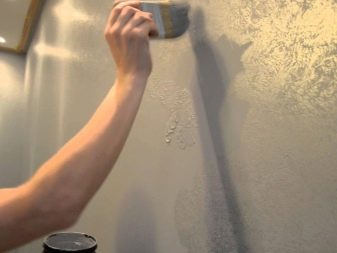
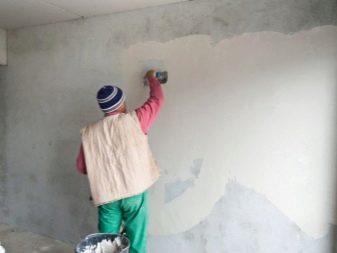
These are the general features of the material. It also has some distinctive properties, which should be discussed in more detail.
Distinctive features
Experts believe that the main feature of decorative plaster is its texture. Thanks to her, you can create almost any design on the walls, everything is limited only by the imagination and skill of the finisher. The second feature lies in the very structure of this material. Decorative plaster contains larger particles of other materials. It is their presence that allows you to create unique bas-reliefs on the walls when decorating premises.
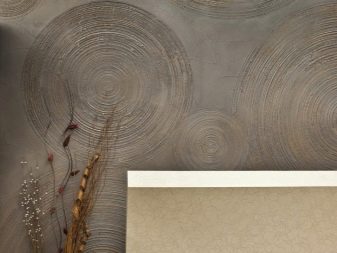
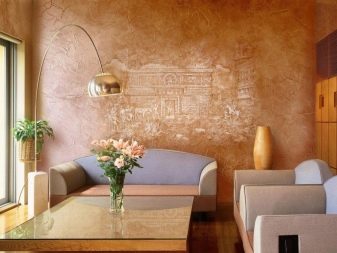
All components that make up this finishing raw material are of natural origin, which means they are completely safe for human health. During operation, the material does not emit toxins into the air. For decorative plaster, you can use almost any paint: a lot of pigments are suitable for it. At the same time, the material does not absorb any odors. Decorative plaster is perfectly combined with any building materials. It can be applied to brick, stone, concrete and plaster. In fact, it is a versatile finishing material.

Can you paint?
Since this material is intended for leveling walls and decorating them, the buyer is often interested in the possibility of painting such plaster, because its natural shades are gray or white, which not everyone likes. The developers allow the process of coloring the finishing material. This work can be done using various paints, or by adding color to the mixture itself during manufacture.
The specific type of color scheme or coloring mixture must be selected based on the type of finishing material itself. It is also necessary to take into account the place where the work process will be carried out. If the front of the work is located in an apartment, it is better to choose paint that is practically odorless or quickly disappears. For outdoor work, it is better to choose special paints with increased resistance. Each type of dye has its own characteristics and performance characteristics, which are taken into account when purchasing a material.
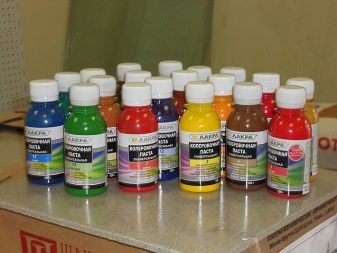
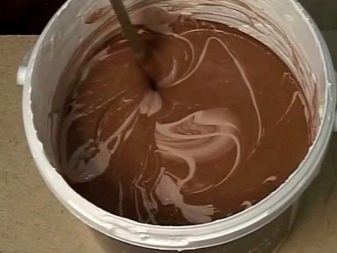
What to choose?
The range of such finishing raw materials on the market today is quite wide.It can be difficult for an inexperienced buyer to choose the most suitable option from the decorative plaster presented on the shelves. Therefore, you should familiarize yourself in advance with the main types of this finish and its characteristics.
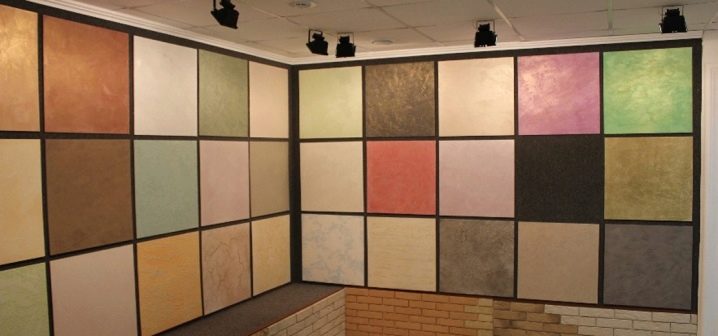
By the type of filler, plaster is divided into three types:
Textured
This material has a highly viscous structure and large filler particles in the composition. The use of this variety does not imply detailed preparation of the walls. It is ideal for indoor and outdoor applications. The finished surface ultimately imitates leather, wood, fabric or paper. Particularly popular for outdoor work is the so-called "bark beetle", which is considered a type of textured plaster.
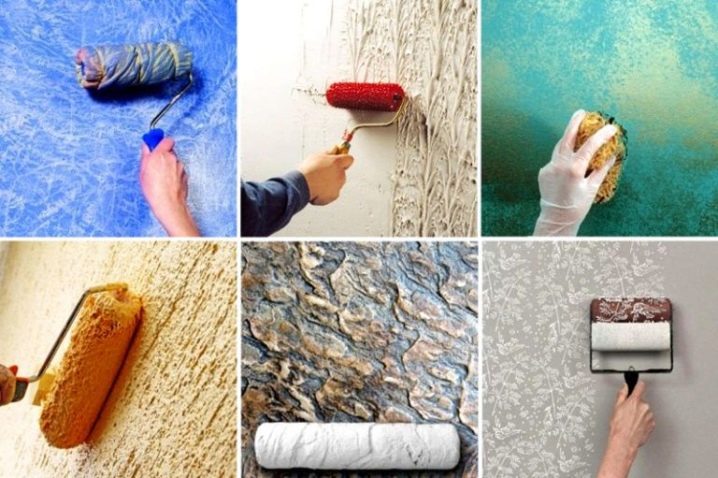
Venetian mix
This type has become widespread when carrying out finishing work indoors. When dried, it imitates the drawing of onyx or marble. At first glance, it is difficult to distinguish it from real stones. The surface treated with Venetian plaster can be glossy or matt. By adding different colors to it, you can achieve the effect of imitation of precious stones. Shades of pearl, silver and platinum are best suited for this.

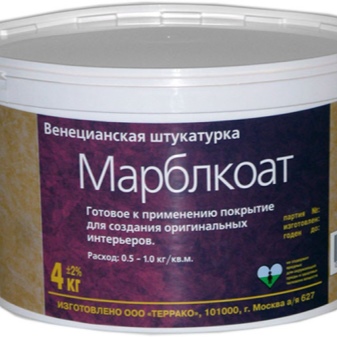
Structural
This decorative plaster consists of several layers and is made on the basis of silicate or acrylic mixtures. It has a heterogeneous structure, excellent technical characteristics, increased resistance to moisture and mechanical shock.
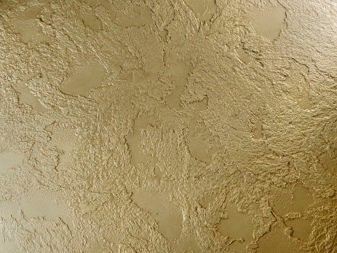
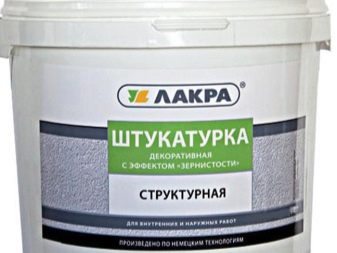
Depending on the type of connecting link, decorative plaster is divided into four categories:
Acrylic
In this case, acrylic resin is the main component. A distinctive feature of this material is low vapor permeability. On sale, such raw materials can be found in a ready-to-use form. The most common decorative plaster of this type is from the VGT brand.
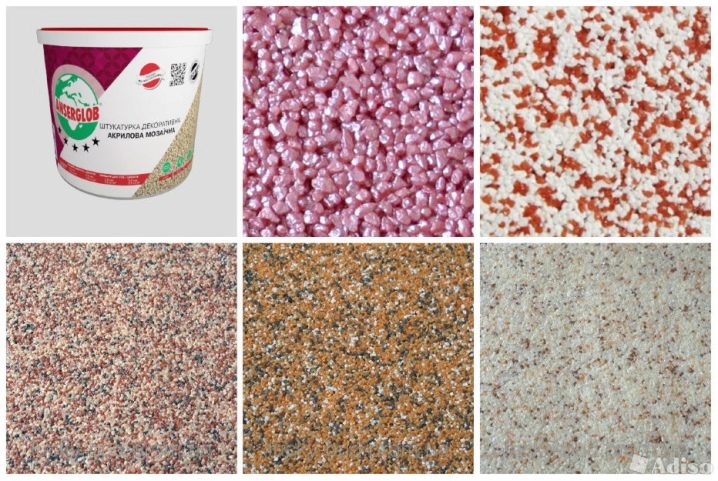
Silicate
This category includes products based on liquid glass. It is distinguished by its high strength and durability. Can be used on all types of surfaces. This plaster is sold exclusively in a ready-to-use form.
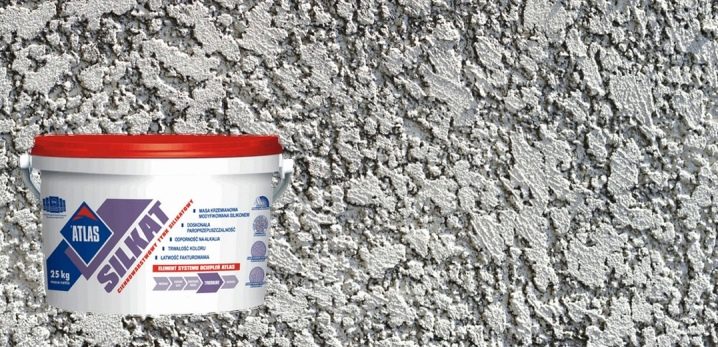
Mineral
This variety is made on the basis of cement. This decorative plaster is suitable for outdoor use, as well as for wall decoration inside rooms with a high level of humidity. It is usually sold as a dry mix that must be diluted with water for use.
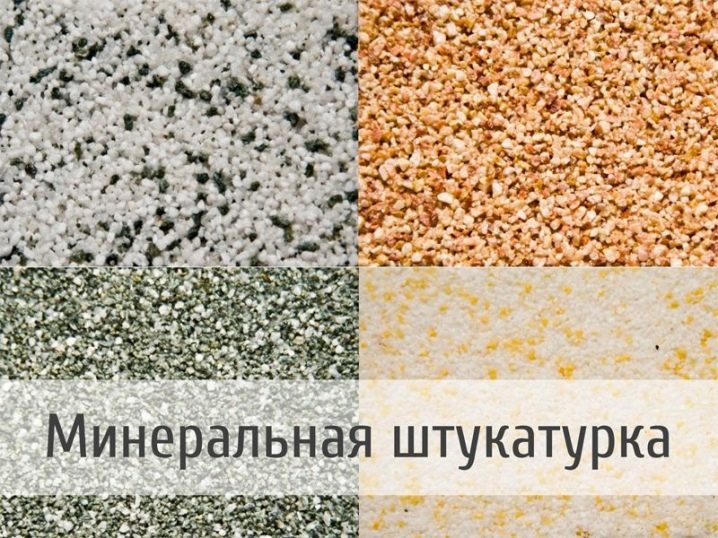
Silicone
The main binder of this decorative plaster is silicone resin. Such plaster belongs to the category of universal, it can be used to decorate walls outside and inside, finishing in any room of the home.
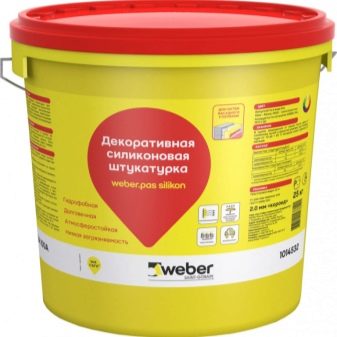
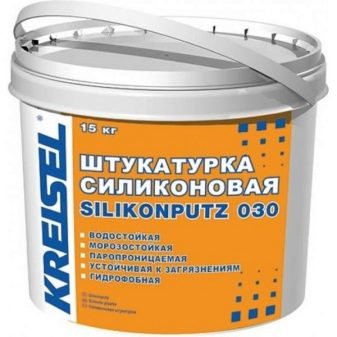
After familiarizing yourself with the main characteristics of each type, you can choose from the putty presented in the store, exactly the variety that you need.
How to use?
There is nothing difficult in painting decorative plaster. You can easily do this work with your own hands. Today there are different types of staining, for which their own ways of doing the work have been developed.
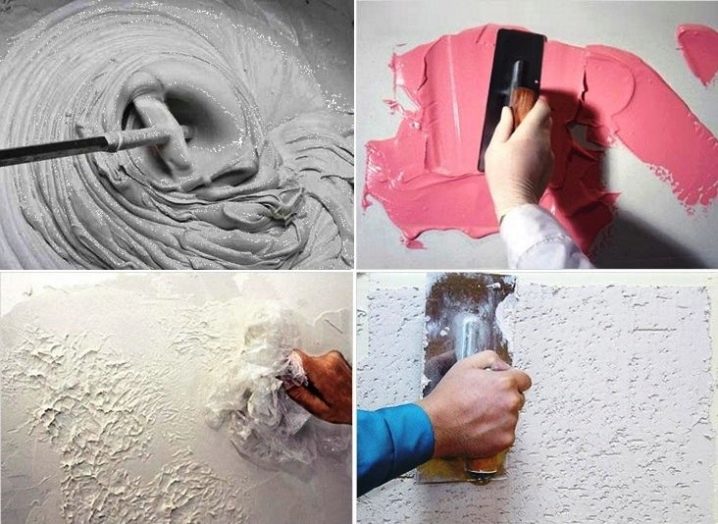
Coloring in two colors
For this method of painting, you will need the following tools:
- short foam rubber roller;
- roller with long pile.
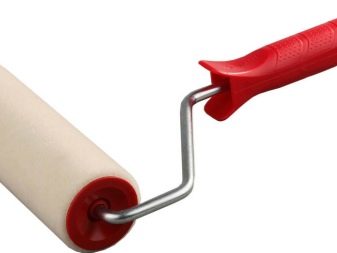

The process of painting the finished wall surface takes place in two stages. Initially, paint is applied to the entire wall with a long-nap roller. It is important that the paint layer is uniform, dense, but not thick. Re-paint only the protrusions on the wall surface using a foam roller. In this case, the paint layer should be thin. Thanks to the two-stage staining, the ledges become darker, and the rest of the wall retains its original appearance. You can do it differently.To do this, a color scheme is added to the plaster itself before use and the mixture is applied to the entire wall, then only the protruding parts are painted over with a foam roller.
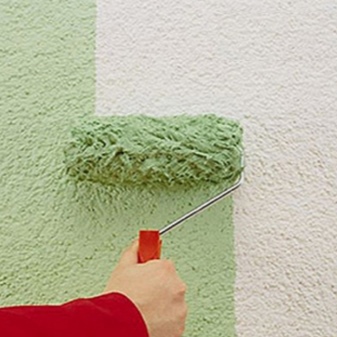

Venetian plaster effect
This staining is performed in 3 stages.
It takes a lot of time, requires diligence in work and consists in the following:
- Using a roller with a long nap, paint the wall in the main base color.
- Using a small foam roller, the protruding parts are slightly painted over with an overflow paint (for example, silver, mixed with a universal primer in equal parts).
- The final coat is now applied. For this, water-based acrylic varnish is mixed with water in a ratio of 3: 1. A small amount of special glitter (sparkles) is added to the resulting mixture. The approximate volume is 1 tbsp. l. per liter of water. The resulting mixture is applied in an even layer of medium thickness using a new small foam roller.
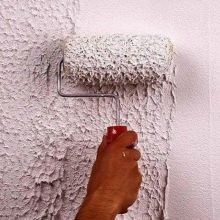
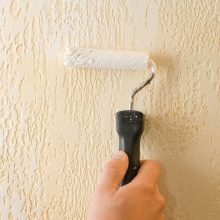
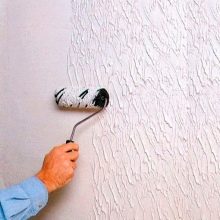
As a result, an imitation of natural stone is obtained on the wall. This effect looks good in modern interiors of apartments and country houses. This surface cladding gives the space a nobility and hints at the well-being of the owners of the house.
Dry brushing
In this case, a little color is immediately added to the plaster and only then the walls are plastered. Next, only the protruding parts are painted with paint. The peculiarity of this method lies in the fact that the paint is applied with a practically dry brush, that is, on the brush itself (the coloring agent is applied in a minimum amount).
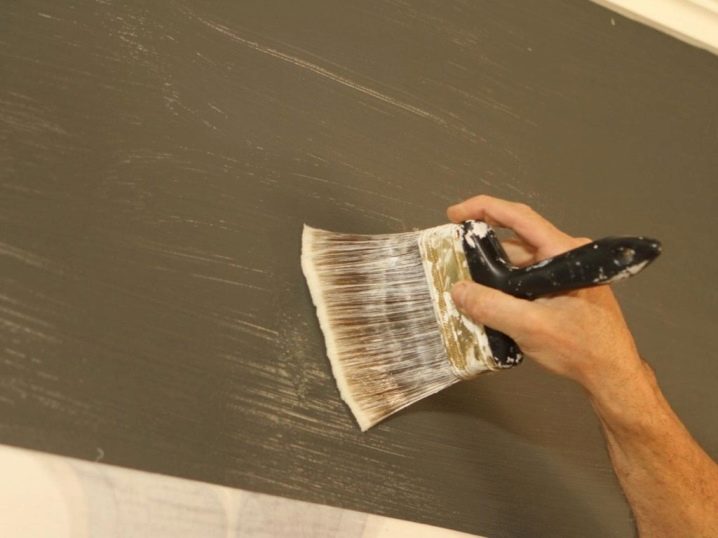
Lightening staining
This painting method is suitable for interior walls. Initially, the water-based paint is additionally diluted with water. Then a section of the wall is carefully painted over with a wide roller and the paint is immediately washed off with a wet clean sponge. As a result, only the hollows on the wall remain stained.
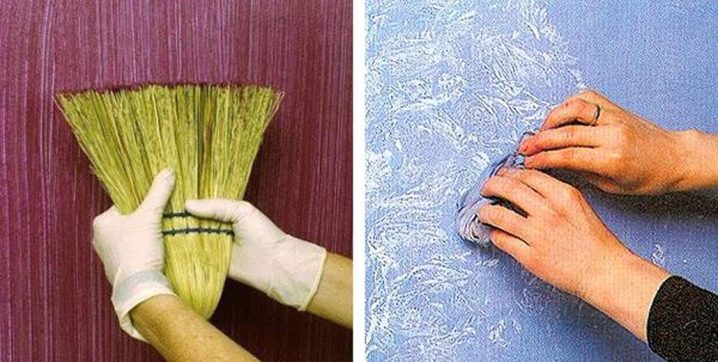
Each method of painting decorative plaster is unique and allows you to create a unique interior design for an individual room and the entire building as a whole. It is important to choose the type of plaster and its color option in accordance with the style of the interior and the general color scheme of the room.
Interesting examples
With the right choice, decorative plaster can turn even the most ordinary room into a real work of art:
The rich golden color and textured surface of the finishing material have turned this living room into a royal suite. Such a room looks quite expensive, stylish and unique. The color of the plaster is in perfect harmony with the curtains and flooring, emphasizing the delicate color of the living room furniture.
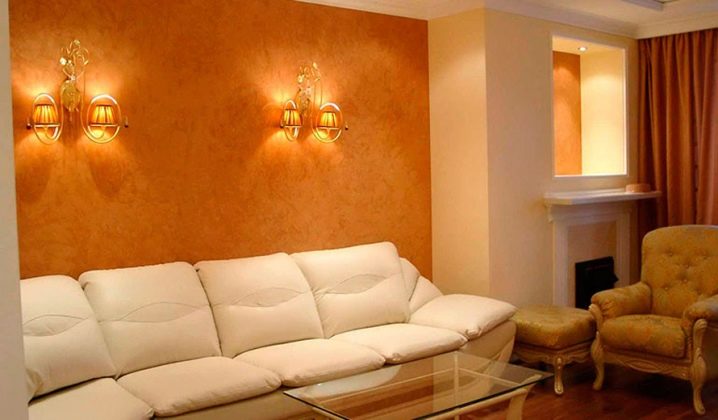
The wall in the hallway, which has such a beautiful plastered wall, immediately becomes extraordinary and stylish, hinting at the delicate taste of the owner of the house.
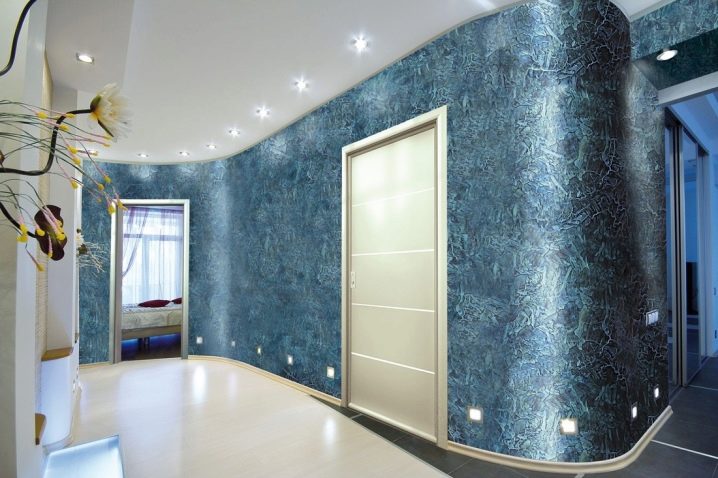
A well-chosen color scheme gives the space a cosiness and a homely atmosphere, a textured butterfly refreshes the entire design.
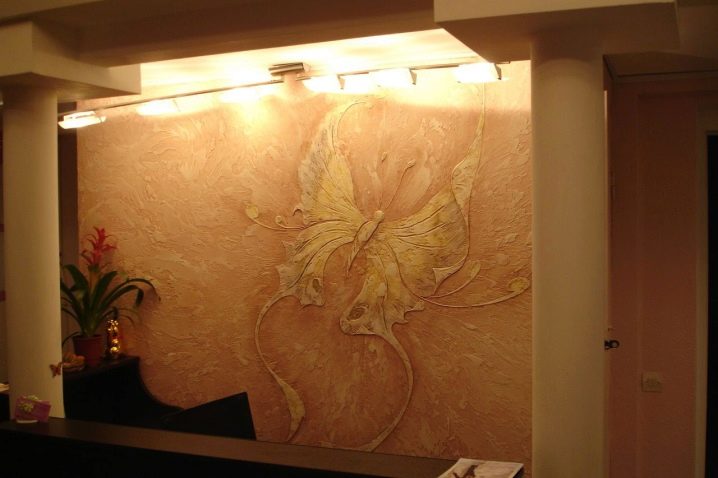
How to apply decorative plaster with the "Flowers" effect, see the next video.













The comment was sent successfully.